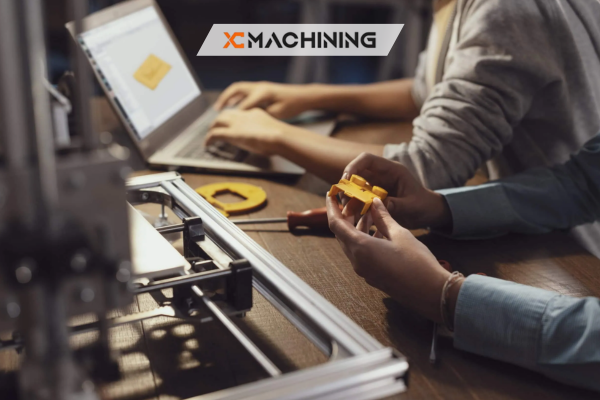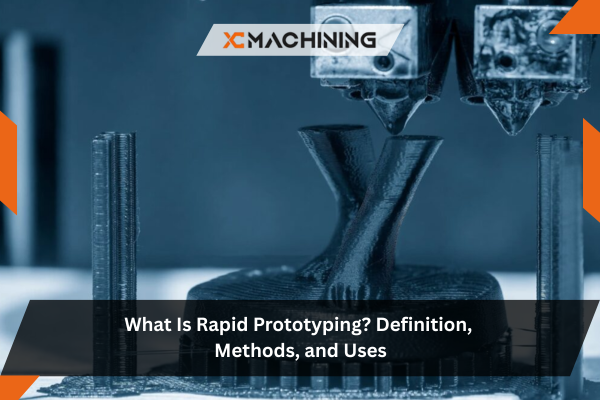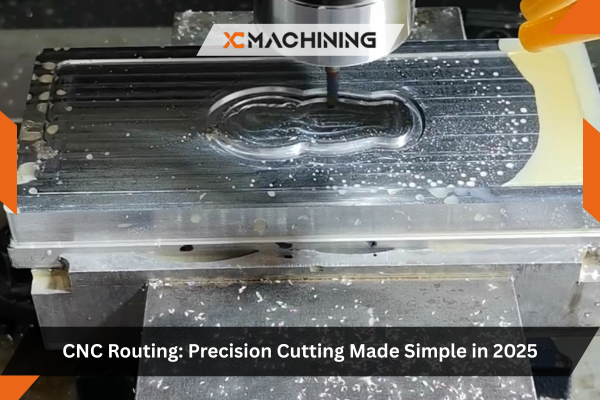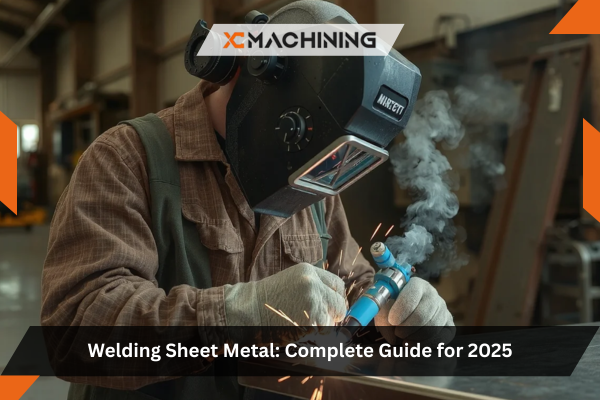What is rapid prototyping and why does it matter? Simply put, it turns computer files into real objects in days, not months. Design teams use schneller Prototypenbau to test ideas fast without expensive molds or tooling.
This shift changed everything. 3d printing prototype creation leads the charge, but CNC machining plays a big role too. Prototype manufacturing happens at speeds that seemed impossible just twenty years ago.
Rapid Prototyping Machining combines different technologies under one roof. Companies like XC Machining offer everything from desktop 3d printers to precision CNC work, giving designers exactly what they need.
Was ist Rapid Prototyping?
The fundamentals of rapid prototyping are straightforward. Engineers create physical models directly from computer aided design files. The National Institute of Standards and Technology calls it building parts “layer-by-layer as opposed to cutting material away”¹.
No expensive setup. No waiting for tooling. Just send a digital file and get a real part back. Schnelles Prototyping skips the headaches that slow down traditional manufacturing processes.
schneller Prototypenbau used for exactly? Testing how parts fit together. Checking if designs actually work. Showing concepts to customers and investors. The process works for tiny electronics or large automotive components.
Types of Rapid Prototyping Technologies
3D Printing Methods
3d printing prototype development offers several technology choices. Stereolithography uses lasers to cure liquid resin into solid plastic. The results have smooth surfaces perfect for user testing.
SLS 3d printing melts thermoplastic powders layer by layer. This additive manufacturing technology produces stronger parts for functional testing. Tools such as Formlabs’ 3d printers make in-house rapid prototyping possible for most design teams.
Fused Deposition Modeling costs the least. Desktop 3d printers using this method help teams prototype quickly and cost-effectively during early design phases.
CNC-Bearbeitung
Rapid Prototyping Machining through CNC machines gives precision that 3d printing processes can’t match. XC Machining runs 3-axis, 4-axis, and 5-axis equipment for complex prototype development.
This subtractive manufacturing approach cuts material from solid blocks. The process works with real production materials, so prototypes accurately represent the finished product. Turnaround times beat traditional methods by weeks.
Hybrid Solutions
Smart shops combine different rapid prototyping methods. Rapid tooling creates multiple prototype parts from one master pattern. XC Machining integrates various rapid prototyping techniques including injection molding with aluminum tooling.
| Technology | Am besten für | Geschwindigkeit |
| SLS 3D-Druck | Functional testing | 24-hour design cycle |
| CNC-Bearbeitung | Precision metal parts | 2-4 days |
| Rapid Tooling | Multiple copies | 3-7 days |
Benefits and Applications
Speed Wins
The benefits of rapid prototyping start with speed. Teams can iterate multiple design ideas within days. While one prototype undergoes testing, engineers tweak the design for the next version.
Rapid prototyping helps designers get user feedback immediately. This responsiveness cuts months from product development cycles. Companies report 60-80% faster development using these methods.

Cost Control
Schnelles Prototyping eliminates upfront tooling costs. Single prototypes cost thousands less than traditional approaches. Early problem detection prevents expensive production changes later.
3d printing prototype costs keep dropping as manufacturing technologies improve. Desktop systems now cost less than a car, making prototyping accessible to small design teams.
Real Examples
BMW and Ford use rapid prototyping methods throughout their development process. They test crash components and aerodynamic features before building expensive test vehicles.
Medical device companies create patient-specific implants using rapid prototyping technology. The FDA accepts certain additive manufacturing applications for direct patient care.
Boeing prototypes complex aerospace components that can’t be machined traditionally. Consumer electronics firms like Apple and Samsung rely on rapid iteration for product development.
Choosing the Right Method
schneller Prototypenbau tool selection based on? Start with material requirements. Metals need CNC machining or selective laser melting. Plastics work with most 3d printing technologies.
Accuracy matters too. Tight tolerances favor CNC machining over 3D printing. Surface finish requirements also influence rapid prototyping software and hardware choices.
Timeline affects everything. Same-day delivery limits options to local 3d printing capabilities. Complex machining needs setup time but provides better accuracy.
Industrial design applications often use multiple prototyping tools in sequence. Initial concepts may start with desktop 3d printers, while functional testing requires precision CNC prototype parts.
Integration with Product Development
Design Process Changes
Schnelles Prototyping transforms how teams approach product development. Early validation of design concepts happens before expensive tooling investments. User testing provides continuous feedback for improvement.
Using 3d printing early in the development process helps identify issues that might appear during production. This iterative process reduces design flaws compared to traditional methods.
Manufacturing Bridge
Prototype manufacturing connects concept to production smoothly. Teams can test actual manufacturing processes and spot potential production challenges early.
The transition works best when designed for manufacturing principles guide prototyping decisions. Example of rapid prototyping success includes companies reducing development cycles by 60-80% through smart technology use.

Advanced Applications
Emerging Trends
Rapid prototyping technology keeps evolving toward production-quality results. Multi-material printing creates functional assemblies in single operations. Some applications now use additive manufacturing technology for final production runs.
Industrial 3d printing capabilities approach traditional manufacturing quality for many parts. This convergence blurs the line between prototyping and production work.
Automation Impact
Modern rapid prototyping tools include artificial intelligence for process optimization. Automated systems catch defects during manufacturing, ensuring consistent prototype quality.
Software tools now provide integrated workflows from computer aided design through manufacturing and testing. This streamlines the overall product development process significantly.
Schlussfolgerung
schneller Prototypenbau represents a shift toward faster, more flexible product development. The technology removes traditional barriers to testing and iteration, letting small companies compete with large corporations.
Schnelles Prototyping continues moving from pure prototyping toward production applications as capabilities improve. Success requires understanding when to use specific rapid prototyping methods for best results.
Companies using these technologies report major improvements in development speed, cost reduction, and product quality. Smart use of rapid prototyping services provides lasting competitive advantages.
Häufig gestellte Fragen
What is rapid prototyping mainly used for?
Schnelles Prototyping creates test models for design validation and functional testing. Teams use prototypes to check fit, form, and function before production tooling. The process also supports market research and investor presentations.
How fast can rapid prototyping deliver?
Die meisten 3d printing prototype jobs finish within 24-48 hours depending on size and complexity. Rapid Prototyping Machining through CNC takes 2-5 days for precision parts. Simple models often complete in hours.
Which materials work with rapid prototyping?
Prototype manufacturing supports hundreds of materials from basic plastics to aerospace metals. 3D printing uses polymers, resins, and metal powders. CNC machining works with any machinable material including aluminum and steel.
How much does rapid prototyping cost?
What is rapid prototyping cost compared to traditional methods? Single prototypes cost much less than tooled alternatives. High-volume production still favors traditional manufacturing, but prototyping almost always benefits from rapid methods.
How accurate are rapid prototyping methods?
Current Rapid Prototyping Machining achieves tolerances within 0.1mm for most applications. 3D printing typically maintains 0.2-0.5mm accuracy depending on technology. CNC machining matches traditional manufacturing precision.
Which method should teams choose?
Schnelles Prototyping method selection depends on material needs, accuracy requirements, and timeline. Visual prototypes work well with 3D printing, while functional testing often requires CNC machining precision.
Citations:
- National Institute of Standards and Technology. “Additive manufacturing.” NIST, U.S. Department of Commerce, 28 May 2025, www.nist.gov/additive-manufacturing
- Wikipedia Contributors. “Rapid prototyping.” Wikipedia, Wikimedia Foundation, 8 Aug. 2025, en.wikipedia.org/wiki/Rapid_prototyping
Manufacturing.gov. “Additive Manufacturing.” Manufacturing.gov, U.S. Department of Commerce, www.manufacturing.gov/topic/additive-manufacturing.





